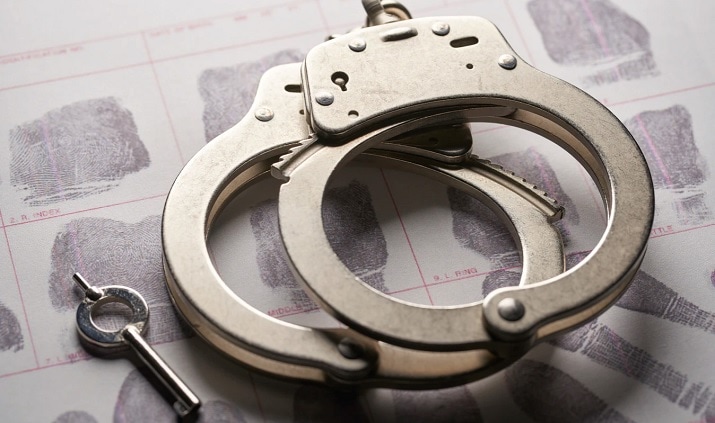
Executive Orders: A Critical Balancing Act in American Governance
In recent times, the debate surrounding executive orders has grown in intensity. With the president’s power to issue directives to federal agencies, many find themselves asking: Are these orders a necessary tool for swift government action, or do they sometimes lead to overwhelming overreach? This opinion editorial takes a closer look at what executive orders really mean, how they work, and where the boundaries lie—all while considering the real-life impacts on federal employees and broader public policy.
At its heart, an executive order is simply a presidential directive sent to various federal agencies. It is designed to steer government operations quickly, without having to wait for lengthy debates in Congress. However, as we poke around the details, we see that executive orders are full of problems when it comes to balancing efficiency with the protection of individual rights.
Understanding Presidential Directives and Their Impact
To get into the basics, an executive order is a tool that allows the president to set or adjust administrative priorities rapidly. Here are a few key points that explain their function:
- Purpose: To direct government agencies on how to execute laws and policies efficiently.
- Scope: They can implement new initiatives, clarify existing policies, or reposition priorities within a department.
- Limitations: Despite carrying the weight of law, these orders must work within the bounds of existing statutes and the Constitution.
Even though executive orders have a reputation for enabling fast, decisive action, they also come with tricky parts. For example, some critics argue that these orders can be used to bypass the traditional legislative process, potentially undermining the checks and balances that are so critical to our democracy.
This tension between executive agility and democratic accountability is what often makes the subject so nerve-racking. It is on this point that our discussion must focus, especially considering recent events that have spotlighted the use of such directives.
The Tricky Parts of Authority and Delegation
One key area of discussion is the allocation of authority within the federal bureaucracy. A recent commentary by defense attorney Josh Kolsrud shed light on situations where executive orders seem to blur the lines between who holds decision-making power. While high-profile figures may sometimes be seen issuing or endorsing directives, the true authority lies with the leaders of individual federal agencies.
Let’s break down some of the little details:
- Distinction of Roles: Even if an influential figure sends out an email or makes a public statement about a directive, the final say is reserved for federal agency heads such as those overseeing the FBI or HHS.
- Delegation of Responsibility: The process of delegation means that while directives might be suggested or endorsed at high levels, the implementation is firmly in the hands of those tasked with running day-to-day operations.
- Checks and Balances: The delegation ensures that a proper internal review occurs before any major administrative change, thereby guarding against rash or off-putting decisions.
This framework helps ensure that even if an executive order is issued in a flaky or contentious manner, responsibility remains diffused among multiple layers of government. This arrangement, while not free from challenges, is a crucial part of how our federal system is meant to work.
Tangled Issues Surrounding Due Process for Federal Employees
An equally important aspect of the executive order debate is the protection of federal employees, particularly when it comes to due process. Historical precedents, such as the Pendleton Act of 1883, have long emphasized the need for fair treatment of government workers—a principle that remains essential to this day.
Federal employees, especially those on probation, often face tricky bits when it comes to defending their rights. Here are some of the key issues:
- Probationary Limits: Employees on probation may have fewer defenses against termination compared to their tenured colleagues. This fact has raised concerns about the potential misuse of executive directives, particularly if they are perceived to be a pretext for bypassing established due process procedures.
- Due Process Reviews: When a directive potentially leads to employment termination, federal agencies are required to conduct thorough due process reviews. These procedures are essential for determining whether dismissals are justified, ensuring that actions are both reasonable and legally sound.
- Historical Lessons: Insights drawn from past controversies—like the case of the 1981 air traffic controllers under President Ronald Reagan—illustrate the necessity for such reviews. They serve as a reminder that speedy administrative responses should not come at the expense of individual rights.
The balancing act here is delicate. On the one hand, executive orders must be powerful enough to ensure that government responds rapidly to pressing circumstances. On the other hand, they must not undermine the protections afforded to federal employees—protections that are there to shield them from mysterious or arbitrary decisions.
Examining Legal Challenges Against Executive Directives
It is not uncommon for executive orders to face legal challenges. These challenges serve as an essential review mechanism, ensuring that presidential directives remain within constitutional bounds. Let’s take a closer look at the legal framework:
- Judicial Oversight: Courts routinely scrutinize executive orders to verify that the proper procedures have been followed. This oversight is crucial in preventing the abuse of power.
- Legal Recourse for Federal Employees: If federal workers are terminated or otherwise adversely affected without proper due process, lawsuits may be filed, compelling courts to reexamine the legality of the order in question.
- Future Implications: Legal challenges today could shape the practices of tomorrow. The outcomes of these cases may lead to clearer guidelines on how much power executive orders can wield without infringing on individual or collective rights.
Below is a mini-table summarizing some points regarding the legal challenges and their implications:
| Aspect | Description |
|---|---|
| Judicial Review | Courts assess whether the executive order follows proper procedures and adheres to constitutional law. |
| Employee Protections | Ensures that federal employees are given fair treatment and a chance to contest any termination. |
| Administrative Oversight | The final decision rests with agency heads after an internal review to verify the order’s compliance with established laws. |
| Long-term Impact | Legal challenges can result in refined processes that balance swift executive action with individual rights. |
The legal battles over executive orders are not just abstract disputes; they have real-world consequences that ripple through our public institutions and affect the day-to-day lives of countless workers and citizens alike.
Small Distinctions: Federal Worker Protections and What They Mean
When working through executive directives, one recurring concern is how federal employees are shielded from hasty or improper actions. The fine points of due process, employment rights, and internal review procedures have become a subject of heated debate among constitutional scholars and legal professionals alike.
Here are some of the key small distinctions to consider regarding employee protections:
- Tenure vs. Probation: Employees with tenure generally enjoy more robust protections compared to those still on probation. This distinction is a critical factor in the likelihood that a given executive order could lead to dismissal or disciplinary action.
- Role of Agency Leaders: In many cases, an agency head’s instruction regarding an executive order will be the final word, even if the directive initially seems ambiguous or open to multiple interpretations.
- Legal Safeguards: Longstanding practices, backed by historical legal precedents, ensure that any changes implemented via an executive directive are subject to rigorous review and must not trample on the rights of federal employees.
Many argue that the current framework may, at times, feel both intimidating and off-putting to federal workers who fear arbitrary dismissals. Yet, the protective legal structures meant to preserve due process also serve to counterbalance any dramatic unilateral actions. They represent a critical component of the ongoing debate about the limits of executive power.
Fine Points of the Debate: Public Policy Implications
The discussion about executive orders also intertwines with broader questions of public policy and governance. It is a subject that touches on the core of how a democratic society should be run. In our fast-paced political environment, understanding the finer details is super important, not just for legal professionals but for every citizen who values transparency and accountability in government.
Here are some of the subtle parts that define the operation of executive orders and their impact on policy:
- Rapid Response vs. Deliberation: Executive orders can react quickly to urgent issues, yet such speed may sometimes bypass the necessary deliberation that a more measured legislative approach would require.
- Policy Reorientation: These orders can recalibrate government priorities in a way that affects multiple areas of public life, from environmental regulation to public safety and beyond.
- Public Perception: The use of executive orders is often viewed through a political lens, with supporters praising their efficiency and critics arguing that they compromise democratic norms.
For citizens trying to figure a path through the maze of political discourse, the conversation might seem tangled due to the overlapping responsibilities and shifting interpretations of presidential power. However, a clear understanding of how these orders are structured can demystify many of the apparent contradictions in their application.
Case Study: The Controversial Directive and Its Fallout
One particularly illustrative example involves a recent incident where an email directive, attributed to a prominent business figure, was purported to carry the authority of a government order. Defense attorney Josh Kolsrud weighed in on the issue, emphasizing that the power ultimately resided with federal agency heads. This case serves as an excellent study in how executive orders are interpreted and enforced.
Consider the following breakdown of this case:
- Initial Confusion: The email directive sparked considerable debate in the media, with many mistaking it for a direct presidential order.
- Clarification of Authority: Legal experts, including Kolsrud, quickly pointed out that true authority rests with the leaders of agencies tasked with managing federal operations. This helped dispel some of the initial confusion and highlighted the system’s built-in checks.
- Outcome and Legal Review: Although the directive raised several eyebrows, a thorough internal review and adherence to due process meant that any decisions resulting from it were warded by established legal safeguards.
This scenario underscores a recurring theme in the debate over executive orders: while these directives can seem imposing and confusing at first glance, multiple layers of review and delegation act as a counterweight. They help ensure that even when the initial message is off-putting, it is ultimately tempered by rigorous legal and procedural standards.
Key Takeaways for Public Understanding
For the average citizen, trying to get around the tangled issues of executive orders can be both overwhelming and, at times, intimidating. It is essential to understand that these directives are not arbitrary; rather, they are deeply embedded in a historical and legal context that insists on accountability. Here are some key takeaways:
- Executive orders are essential: They allow the government to react quickly to rapidly evolving situations, keeping policy aligned with contemporary needs.
- There are built-in legal checks: The necessity for due process and judicial oversight acts as a safeguard against potential abuses of power.
- Understanding the hierarchy: The final authority lies with federal agency heads, whose role is to interpret and implement the orders within established legal frameworks.
- Public vigilance remains important: A well-informed citizenry is a key pillar of democracy, ensuring that executive power is exercised responsibly and within prescribed limits.
These observations are not meant to criticize the mechanism of executive orders but rather to highlight the balance that must be maintained. They offer a sober reminder that the executive branch, despite its rapid-response capabilities, is subject to the same rigorous standards as any other arm of government.
Policy Implications: Finding the Right Balance
As discussions about executive orders become more frequent in political and legal circles, it is essential to reflect on what the future might hold. There is a persistent need to balance the desire for efficient government action with the equally important need to protect democratic principles and individual rights.
This balance can be thought of in terms of a two-pronged approach:
- Swift Administrative Action: In times of crisis, the ability to take immediate action is super important. Executive orders provide that necessary tool for rapid policy adjustment. However, such speed should not blind us to the potential for hasty decisions that may later require legal correction.
- Preservation of Due Process: Every federal employee and citizen must have confidence that their rights are safeguarded by clear legal procedures. Ensuring strict adherence to due process principles remains a key priority.
Policymakers, legal experts, and the public at large need to continue these conversations. After all, the long-term legitimacy of our governance system rests on its ability to adapt without compromising core democratic values.
Working Through the Twist and Turns: Balancing Efficiency with Accountability
It is undeniable that executive orders can initiate rapid change, a characteristic that is both their strength and a potential source of risk. The challenge lies in managing your way through the maze of administrative procedures while ensuring that every step taken is supported by robust legal oversight.
Some of the key elements that contribute to this balancing act include:
- Internal Reviews: Agencies must ensure that any directive they enforce undergoes a thorough internal review to verify its consistency with existing laws.
- Legal Safeguards for Employees: Comprehensive procedural protections are in place, allowing federal workers to contest decisions and seek redress if due process is not observed.
- Judicial Oversight: Courts act as arbiters, ensuring that executive actions remain within constitutional limits and do not encroach on individual rights.
Below is a table summarizing these measures and their roles:
| Measure | Role |
|---|---|
| Internal Agency Review | Ensures consistency with administrative law and existing policies before implementation. |
| Due Process Protections | Provides federal employees with a fair chance to contest any actions that affect their job security. |
| Judicial Oversight | Maintains the balance by ensuring that executive directives do not violate constitutional rights. |
These layers work together to create a robust system that, despite its occasional appearance of being full of problems, strives to protect both the public interest and individual rights.
Reflections on a Volatile Political Landscape
In our ever-changing political landscape, executive orders have become flashpoints for broader discussions about government power and accountability. Whether seen as indispensable tools for modern governance or as risky shortcuts that bypass deliberative processes, these orders embody the perpetual tension between rapid governmental response and the safeguarding of democratic principles.
The debate is not merely academic. For many federal employees, the issuance of an executive order can feel like an ambiguous signal—one that carries the potential for immediate change and even personal consequence. For the broader public, it serves as a wake-up call to stay informed and engaged with how power is exercised at the highest levels of government.
Critics often argue that the use of executive orders tends to be a nerve-racking experience, filled with confusing bits and tangled issues. Advocates, on the other hand, see them as key instruments for making sure that government remains agile and responsive in times of emergency. Amid these differing viewpoints, the debate remains decidedly neutral when one examines the legal underpinnings that govern their use.
In practice, this means that every executive order, regardless of its origins or the controversies it might trigger, is subject to a rigorous set of legal checks and balances. These measures ensure that federal employees and citizens alike are afforded super important protections, even as government moves quickly to address the challenges of the day.
Looking Ahead: The Future Outlook on Administrative Directives
Considering all the points discussed, it is clear that executive orders are here to stay. However, their future use will likely depend on a continuous process of re-evaluation and reform. The following factors are sure to shape this outlook:
- Advances in Legal Interpretation: As courts and legal scholars take a closer look at these orders, we can expect a refined understanding of where the limits should lie.
- Evolving Administrative Practices: With increased transparency and internal checks, federal agencies may develop even more robust procedures to ensure that executive directives are balanced with respect for individual rights.
- Public Awareness: A well-informed citizenry is critical. The more the public understands about how these orders work, the better it can participate in—and hold accountable—the democratic process.
- Political Will: Ultimately, lasting reform will require a commitment from elected officials to uphold the principles of due process and accountability, even as they seek to make government more efficient.
In the end, the debate over executive orders is far from one-sided. It is a discussion loaded with both promise and peril—a subject that demands we keep our eyes open to both the benefits and the possible risks of concentrated executive power.
Final Thoughts: Striking a Balance Between Speed and Fairness
Executive orders represent a unique facet of American governance. They enable presidents to steer policy quickly in moments of urgent need, while simultaneously being buttressed by a system of legal safeguards aimed at protecting individual rights. As we take a closer look at the evolution of these directives, we realize that the conversation is about more than just administrative efficiency—it is about ensuring that every government action remains tethered to the principles of justice and fairness.
Whether you are a federal employee worried about potential job insecurity or a concerned citizen keeping track of the latest policy shifts, understanding the real meaning behind executive orders is absolutely critical. By getting into the fine points of the delegated authority, the legal challenges, and the due process protections, we gain a better appreciation for how our government works—and how it must always remain accountable.
The key takeaway here is clear. While executive orders offer a means for rapid and decisive action, they are not unchecked royal decrees. Instead, they are part of a time-tested framework designed to balance swift government intervention with the enduring need for fairness and due procedure. As the debate continues, both policymakers and the public must remain vigilant in ensuring that this balance is maintained.
In summary, the future of executive orders will depend on finding that delicate equilibrium—a balance that allows for fast responses when necessary without sacrificing the legal and procedural safeguards that protect our democratic values. It is a conversation that is sure to persist, as each new directive tests the boundaries of presidential authority and reminds us of the critical role of due process in American governance.
As we look ahead, it is essential for everyone—from government officials to everyday citizens—to keep a close watch on how these orders evolve over time. Only by staying informed and engaged can we ensure that the workings of our government remain both efficient and just.
This ongoing dialogue is not just about legal principles; it is about the kind of society we want to live in—a society that values both the need for rapid action during crises and the non-negotiable requirement for fairness, transparency, and accountability in every government decision. In this light, executive orders are not just administrative tools but also a reflection of our collective commitment to uphold democratic norms.
Let us remain watchful, ask the tough questions, and ensure that while our government continues to take swift action, it does so within a framework that respects the rights and dignities of all individuals. In the end, it is through balanced and informed debate that we can secure a better, fairer future for everyone.
Read more about this topic at https://kolsrudlawoffices.com/josh-kolsrud-3tv-news-latest-presidents-executiv-orders/
Related articles you might like
Presidential Executive Orders: What They Mean … and ...
What Is an Executive Order and How Does it Work?



